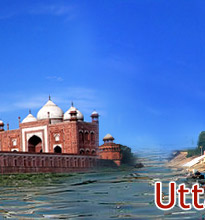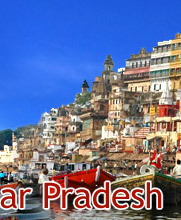 Ghazal
originated in Iran in the 10th century A.D. It grew from the Persian
'Qasida', which in verse form had come to Iran from Arabia. The Qasida
was a panegyric written in praise of the emperor or his noblemen.
Whereas the Qasida sometimes ran into as many as 100 couplets or more in
mono-rhyme, the Ghazal seldom exceeded twelve and settled down to an
average of seven. Because of its comparative brevity and concentration,
its thematic variety and rich suggestiveness, the Ghazal soon eclipsed
the Qasida and became the most popular form of poetry.
Ghazal
originated in Iran in the 10th century A.D. It grew from the Persian
'Qasida', which in verse form had come to Iran from Arabia. The Qasida
was a panegyric written in praise of the emperor or his noblemen.
Whereas the Qasida sometimes ran into as many as 100 couplets or more in
mono-rhyme, the Ghazal seldom exceeded twelve and settled down to an
average of seven. Because of its comparative brevity and concentration,
its thematic variety and rich suggestiveness, the Ghazal soon eclipsed
the Qasida and became the most popular form of poetry. The Ghazal came to India with the advent and extension of the Muslim influence from the 12th century onwards. The Moguls brought along with them Iranian culture and civilization, including Iranian poetry and literature. When Persian gave way to Urdu as the language of poetry and culture in India, the Ghazal found its opportunity to grow and develop. Although the Ghazal is said to have begun with Amir Khusrau in Northern India, Deccan in the South was its real home in the early stages. Md Quli Qutab Shah, Wajhi, Hashmi, Nusrati and Wali may be counted among its pioneers.
In its form, the Ghazal is a short poem rarely of more than a dozen couplets in the same meter. It always opens with a rhyming couplet called 'Matla'. The rhyme of the opening couplet is repeated at the end of second line in each succeeding verse, so that the rhyming pattern may be represented as AA, BA, CA, DA, and so on. In addition to the restriction of rhyme, the Ghazal also observes the convention of 'Radif'. Radif demands that a portion of the first line comprising not more than two or three words immediately preceding the rhyme-word at the end, should rhyme with its counterpart in the second line of the opening couplet, and afterwards alternately throughout the poem.
The opening couplet of the Ghazal is always a representative couplet: it sets the mood and tone of the poem and prepares us for its proper appreciation. The last couplet of the Ghazal called 'Maqta' often includes the pen name of the poet, and is more personal than general in its tone and intent. Here the poet may express his own state of mind, or describe his religious faith, or pray for his beloved, or indulge in poetic self-praise. The different couplets of the Ghazal are not bound by the unity and consistency of thought. Each couplet is a self-sufficient unit, detachable and quotable, generally containing the complete expression of an idea.
In India, there were broadly 3 schools of Ghazal namely Delhi, Lucknow and Deccan schools. Among these, Lucknow school is very popular in Uttar Pradesh. Some of the greatest exponents of this school are Akbar Allahabadi, Mazaz Lucknowi, Firaq Gorakhpuri, Josh Malihabadi, Ali Sardar Jafri, Kaifi Azmi, Jan-nisar Akthar, Javed Akhtar and Bashir Badr









